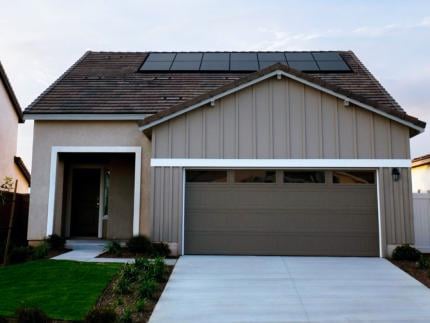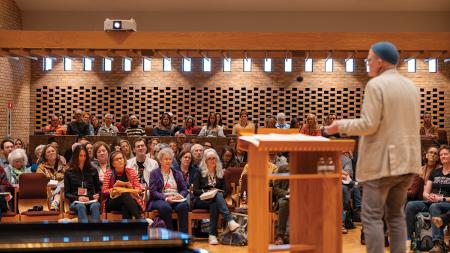Tips for Helping to Cool the Planet

The most recent Intergovernmental Panel on Climate Change report states that our planet is warming at a rate faster than anything we’ve experienced in the last 2,000 years.
This is serious and systemic change is needed. We ask, “What can we do?”
Here is a look at New Jersey-based education company, ETS, that is helping employees learn to make changes a priority.
Recently, the company’s Green Team hosted a lunch-and-learn session with the Climate Witness Project’s regional organizer, Allen Drew.
The virtual meeting was attended by a range of people, and Drew shared both an overview of what the concept “Net Zero” is all about, as well as practical steps to reduce a household’s carbon footprint.
To set the stage, Drew pointed out that American households are responsible for a full 20 percent of direct emissions in the United States, but that’s not the whole picture. “It’s a full 80 percent if we include indirect emissions [as well],” he said.
Direct carbon emissions are fairly easy to understand, as these come from such daily actions as driving a car and exhaust being produced; or water being heated with a natural gas water heater. Indirect emissions are a little more complicated, as these are produced indirectly in order to create the products and services American households use and buy.
To illustrate indirect emissions, Drew shared the example of turning on a light switch in a home. While there are no direct emissions from this action, yet in order to have that electricity flowing, it has to be generated. “If that electricity is being generated by the fossil fuel factory down the road, then that flip of a switch is responsible for indirect carbon emissions,” he stated.
Drew presented a list of practical ways that ETS employees learned how they can start reducing their carbon footprint, which often results in saving money as well. He suggested multiple ideas, including the following:
- Change all household light bulbs to LEDs.
- Get an energy efficiency audit through the local power company. Many utility companies provide these audits for free, and can help customers discover more ways of improving energy efficiency for your particular house.
- Decarbonize a household’s electricity source. Many utility companies have the option of allowing a choice on where electricity is generated from. When this is available in a region, all it takes is a phone call to switch to clean energy.
- Invest in solar energy. Rooftop solar is a very good financial investment and is great for the environment.
- Change commuting practices by biking to work, carpooling with others, or taking public transit. If a destination is close, try walking!
- Switch to an electric vehicle when financially feasible. Because carbon emissions need to be reduced by 50% across the globe in the next nine years, it’s important to move away from fossil fuels. Plus, as the infrastructure for electric vehicles continues to grow, it’s becoming easier and easier to switch.
- Organize the refrigerator to cut down on food waste. American households waste almost ⅓ of the food they buy. And if we just throw it away instead of composting it, it will go into a landfill and produce methane gas. By intentionally using or composting leftovers, a household can reduce their carbon footprint AND save a lot of money!
- Buy organic when possible. Not only is organic produce healthier, it also has a much smaller carbon footprint than non-organic foods. Plus, organic farming methods make the soil much healthier, and that healthy soil is able to store carbon.
After sharing these practical steps for lifestyle change, Drew then pointed out that while reducing a household’s carbon footprint is important, there are many structural supply chain and government policy issues that make it almost impossible to reduce indirect emissions. That’s why it is vital to pursue systemic change.
One way to pursue large scale change is to divest retirement funds and investments from fossil fuels. Another important tool for systemic change is through voting. Drew encouraged everyone to make environmental justice a priority when they vote in local, state and national elections. “Individual choices are not enough,” he stated. “We need big environmental policy changes in order to keep driving things forward.”
Finally, he touched on the need to act collectively. Drew shared a list of ways that ETS as a company could pursue systemic carbon footprint reduction, including doing a comprehensive evaluation of the company’s carbon emissions; divesting all employee retirement accounts from fossil fuels and instead investing in fossil-free funds; and electrifying and adding solar to all buildings that ETS owns.
Drew cheered on the work that ETS was already doing to reduce their carbon footprint. “By going through the process and coming up with a strategy – that’s a really good thing to do.” The virtual meeting ended with a question and answer time that allowed participants to ask more specific questions and seek advice on how to reduce their carbon emissions.
Are you interested in your organization learning more about how to make Net Zero work for you? We’ve got regional organizers like Allen Drew based throughout North America who are available to speak to your church, business or civic group about a wide-range of climate change topics. To learn more, send us a message and we’ll connect you with a speaker in your area.


